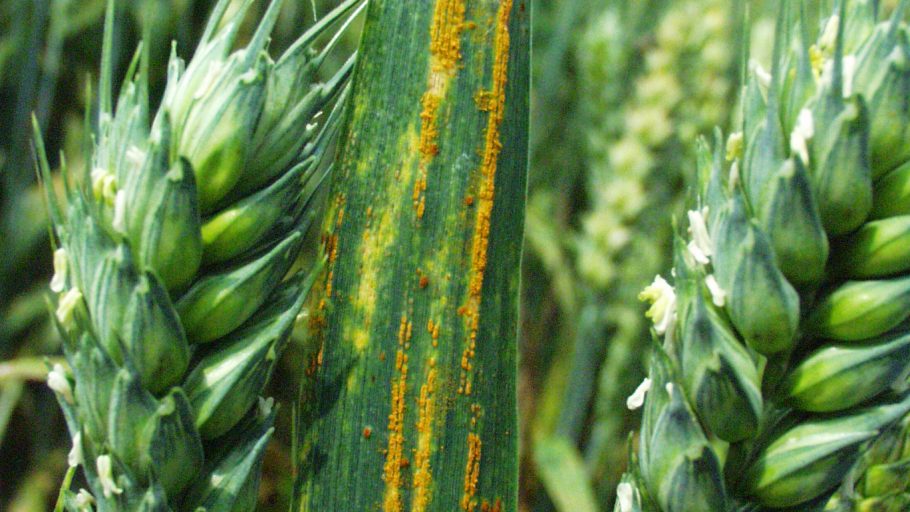Agronomist found disease in St. Marys, Ont. wheat field
By Kaitlynn Anderson
Staff Writer
Farms.com
Farmers may want to carefully scout their fields for stripe rust.
Nicole Bloetjes, a sales agronomist with Wellburn Agromart, discovered the disease in a wheat field in St. Marys, Ont. yesterday.
While Bloetjes found the rust pustules in the middle of the field, farmers may find this disease in different areas.
More often, “you may find (stripe rust) along headlands or tree lines because that’s where the wind would blow it,” she told Farms.com this morning.

OMAFRA photo
If stripe rust is present in the fields, producers will find pustules between the leaf veins. (During her field walk yesterday, Bloetjes found the disease on the flag leaf.)
“You’ll see paler strips of leaf tissue and then, when you flip the leaves over, you’ll see the rust pustules,” she said.
After walking through heavily infected fields, scouts may even find the orange pustules on their legs, she said.
The disease, which blows into Ontario from the U.S., tends to develop when temperatures range between 10 and 15 C (50 and 59 F), today’s C & M Seeds article stated. However, scouts have observed stripe rust in fields when temperatures were as high as 30 C in the past.
Farmers can take many precautions to prevent this disease from infecting their wheat.
To protect their crops early in the season, producers can add fungicides to their herbicide applications, Bloetjes said.
When wheat reaches the heading stage, farmers can also “take care of stripe rust when they spray for fusarium,” she said.
For more information on rusts, check out the Farms.com Field Guide.
DLeonis/iStock/Getty Images Plus photo